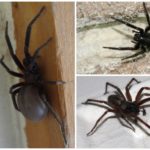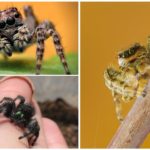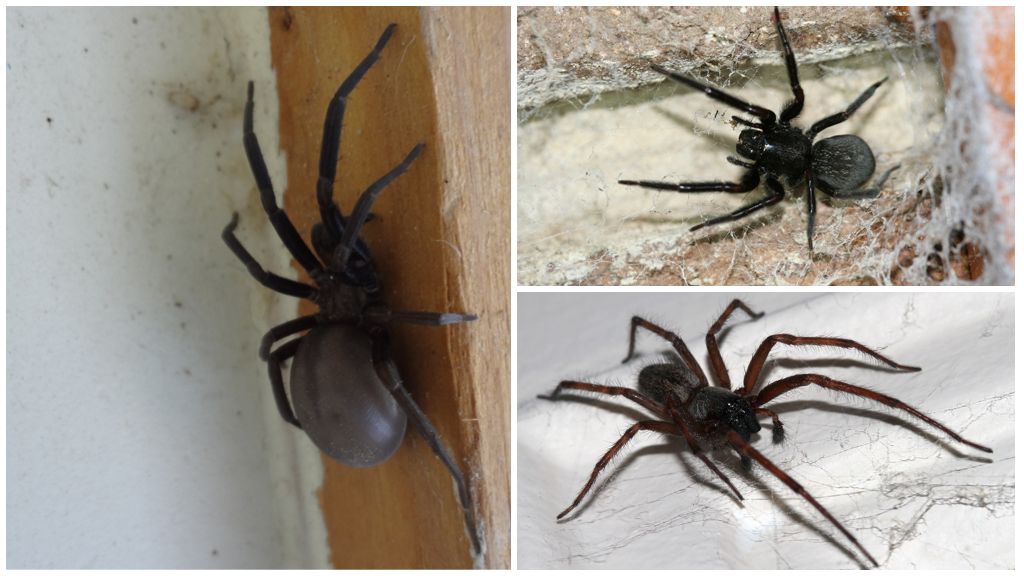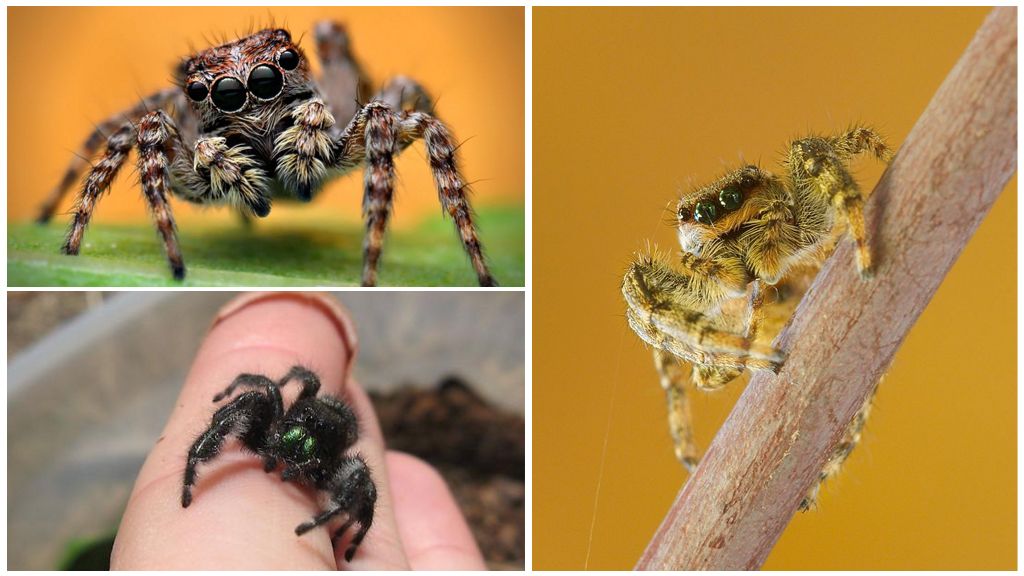What kinds of spiders live in an apartment or house
Content
- Black home spider
- Scooter or Jumping Spider
Domestic spiders - unexpected "guests" from the street or pets that live in terrariums. Arthropods penetrate a residential house, an apartment through open windows, doors, cracks in the wall. House spiders hide in secluded places, away from direct sunlight. Favorite places - the corners of the room, window sills, cabinets, the space behind the furniture, household appliances.
Photos and names of domestic spiders
The presence of an arthropod in a house is often determined by the presence of a web. Most of the spiders that live in houses weave trap nets at night. This activity takes about 1 hour. In the morning the cobweb starts to sparkle in the corners of the rooms, in the lockers, behind the furniture, under the ceiling. The victims of spiders living in houses are flies, moths, caterpillars, cockroaches.
Haymaker
He is a kosynozhka, Cavity, window spider. The body size of the most familiar domestic species does not exceed 1 cm. Long legs attract attention. Coloring in red, brown tones, abdomen somewhat darker. The body is oval, convex. Haymaker weaves a random web in the corners of rooms, windows. Often settled in attics.
On a note!
In the house, this species appears closer to autumn, when the air temperature drops at night. During the day, the spider likes to bask in the sun, often seen on the walls with legs splayed to the side. A kinoshozhka does not attack people, but in case of danger for its own life it can bite. The spider is not poisonous, not dangerous.
The eggs are laid at the end of summer. Weaves a cocoon, attaches it to its web. After a few weeks, the young appear, which look like an adult, but of a light color. The kosynozhka lives about 12 months.To get rid of this type of domestic spiders, you just need to clean the house.
Black home spider
The widespread species lives in trees. Often creeps on the walls of the house. Crawls in through the window openings, open vents. Females are quite large. Together with splayed legs the spider grows up to 3 cm. Males are 2 times smaller.
Black spiders living in houses, hiding in the corners, behind the furniture. Lead nocturnal, day sit in a secluded place. The web resembles a pipe with complex random patterns. They feed on living creatures, which also accidentally get into the house - flies, butterflies, moths, beetles.
Interesting!
At home, breeds very rarely. With the arrival of winter, their activity is reduced, and general cleaning in the apartment finally sweeps away the traces of an unwanted guest. Imago lives about 2 years. Spiders are born from eggs that look like imago.
Body color is dark - black or gray. The abdomen is round, convex. Light spots may be present. More than 1 thousand species live in Russia. The little black spider is a male. You can even get rid of it without making any effort.The male lives a few weeks. For a person, the presence of an animal in an apartment is not dangerous to health, but the arthropod can bite while defending.
Spider tramp
An ordinary house spider weaves a web in the corners, thereby giving out its presence. The vagabond does not form trapping nets, waiting for a victim in a secluded place.
Important!
In Russia, this species is not dangerous, in Brazil it is one of the most poisonous spiders. In the absence of an antidote, the child dies within 15 minutes, the adult within half an hour.
Vagrants - street spiders, but often get into the house by chance through open windows, doors. Color in brown tones. On the legs of the dark stripes. The body is oval, slightly flattened, long powerful limbs. Females are always bigger than males, more agile. Tramp running fast. Activity manifests at night. Life expectancy is 2 years.
How these species of spiders breed - once a year. The female spins a cocoon, lays several hundred eggs. Cubs scatter in different directions immediately after birth. The process of reproduction in the natural wild conditions, in the house - no.
A big trampy spider may scare with its appearance, but it does not attack people.As often gets into things, shoes, bite can, fearing for their own lives. The bite is piercing, painful. Causes an allergic reaction of varying degrees of intensity. Especially hard to tolerate the attack tramp small children, people with a weakened immune system.
Horsehead
Jumping spider - a representative of a large family, consisting of 6 thousand species. Unlike many of its other relatives, they have very good eyesight. They are great hunters.
Color is the most diverse. Species of domestic spider mimics the ant, beetle. Abdomen flattened, elongated, cephalothorax raised. Paws are massive, long. They live in the wild often live on trees, shrubs. In the house fall by accident. They do not weave web, they hunt mostly during the day. The body size of the female is no more than 1 cm.
The female lays eggs in large numbers in a self-woven cocoon. It protects the nest until the young. Some time feeds them, after the first molt spiders scatter in different directions. Scooter is not dangerous for humans. The poison is toxic only to insects, beetles.
White home spider
The most dangerous species live in tropical countries. In the south of Russia you can find karakurt in white. Lives in the wild, but can penetrate into the house in the summer. The bite causes severe allergies, swelling, swelling. Impairment of well-being, difficulty breathing, muscle spasms. In our area - one of the most dangerous.
On a note!
Which spiders live in apartments depends on the area. If there are a lot of trees, vegetation behind the window, any arachnid that lives in this region can get into the house. Whether home spiders are dangerous for humans is not, if they are not exotic poisonous creatures that escaped from the terrarium.
Pets
Decorative spiders in most cases have a unique color, huge sizes. They have become the home favorite of the human tarantula. They are considered the largest representatives of arachnids. Known 1500 species. The most exotic inhabit tropical countries. Collectors buy them for impressive amounts. Manual spiders live in artificial conditions up to 3 years. Poisonous. Therefore, to keep them prone to allergies is not recommended.
Interesting!
The huge spider in natural conditions weaves a web in diameter up to 2 m.The network is so strong that birds are easily confused in it. Predators of insects, beetles, amphibians, birds, rodents eat. At home, they are fed with insects, kept in large aquariums or terrariums.









